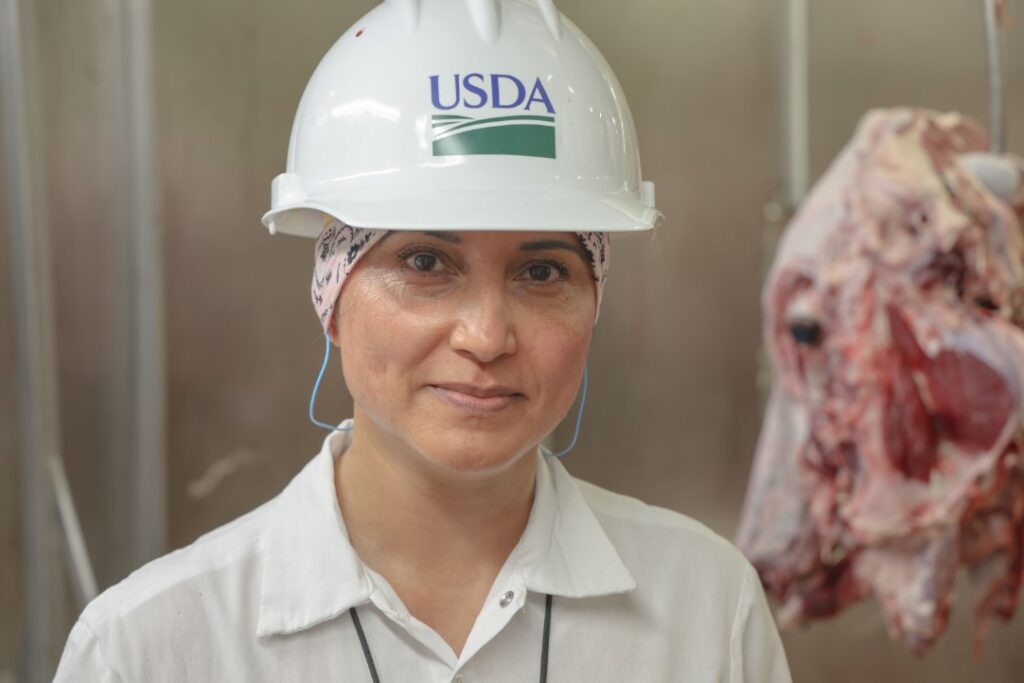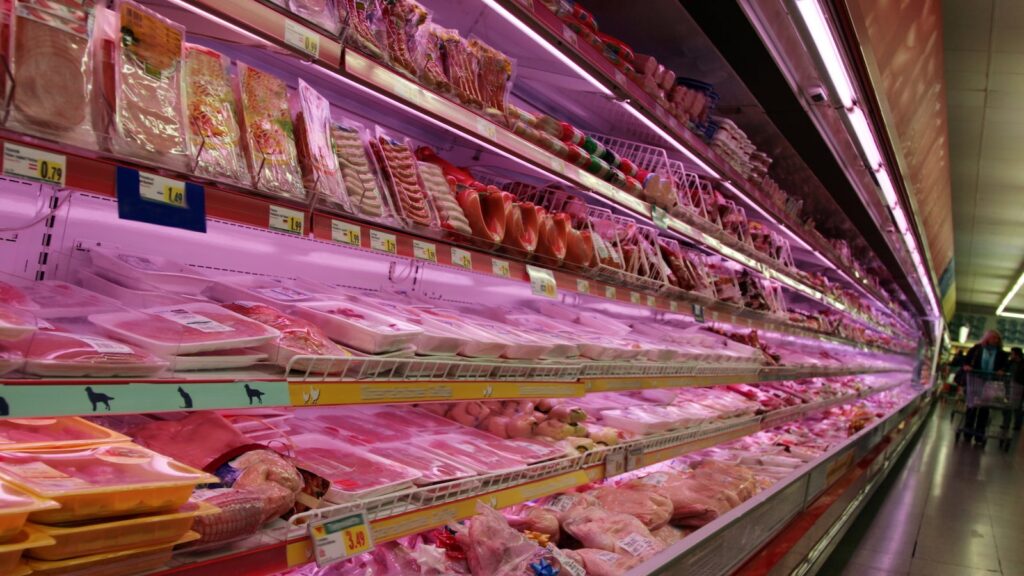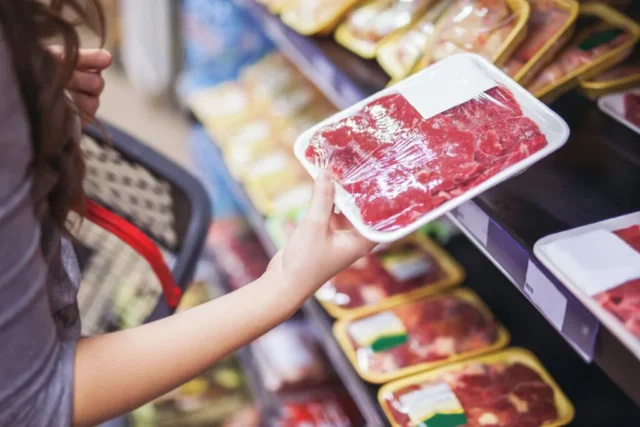The United States Department of Agriculture (USDA) is doubling down on one of its toughest challenges: ensuring that meat entering the country is exactly what it claims to be.
With global food supply chains stretching across continents, it’s not uncommon for imported products to pass through several intermediaries before reaching American shelves.
That complexity leaves room for errors, and sometimes, outright fraud. To combat that, the USDA has begun expanding its inspection technology to spot mislabeled or counterfeit imported meat before it ever makes it into stores.
Why the USDA Is Strengthening Oversight

For decades, the USDA’s Food Safety and Inspection Service (FSIS) has been the watchdog ensuring that domestic and imported meat meet federal safety and labeling standards. But as trade has expanded and the sources of imported meat have multiplied, the system has faced growing strain.
To help verify whether imported inspection data or reports have been written by automated systems, some analysts use an AI detector free tool to confirm the authenticity of documentation submitted by foreign suppliers.
The challenge isn’t only about safety. Labeling integrity has become just as critical. Consumers expect accurate information on where their food comes from and how it was produced. Mislabeling – intentional or not – undermines trust and creates unfair competition for U.S. producers.
Several issues have raised concern:
- Imported meat falsely labeled as “Product of USA” after minimal processing in the country.
- Beef or pork from countries with weaker safety protocols is entering under false origin claims.
- Misleading organic or grass-fed labels are applied to products that do not meet those standards.
To tackle all of that, the USDA is introducing advanced data systems, image recognition, and digital tracking tools to give inspectors more precise, real-time insight into the origins and handling of imported meat.
The Role of New Inspection Technology

The agency’s move isn’t just about catching mistakes – it’s about creating a smarter, faster inspection process that can handle modern supply chain realities. The new systems combine several key technologies, each addressing a specific weak point in the inspection process.
1. Data Integration Across Import Channels
In the past, import data was often fragmented across agencies like Customs and Border Protection, the FDA, and the USDA itself.
Now, the USDA is investing in integrated databases that link shipping manifests, certificates of origin, and prior inspection histories into a single dashboard.
Inspectors can now:
- Cross-check shipment details instantly against known exporters or flagged facilities.
- Detect inconsistencies between product labels and export documentation.
- Identify repeat offenders using data-driven risk scoring systems.
The result is a more efficient triage process that directs human inspectors where they’re needed most.
2. Machine Vision and Label Verification
One of the biggest breakthroughs is in computer vision – the same type of AI technology used in manufacturing quality control.
The USDA has begun testing optical systems capable of scanning package labels and comparing them to approved label templates in real time. If the system spots an unapproved variation or missing certification mark, it triggers an alert.
Machine vision helps inspectors:
- Catch label tampering and unauthorized claims faster.
- Verify that barcodes, brand names, and country-of-origin marks match official records.
- Document every label inspection digitally, creating traceable audit trails.
That automation doesn’t replace human judgment – it enhances it by flagging issues that might otherwise slip by in high-volume ports or warehouses.
3. DNA Testing and Product Authentication
Beyond packaging and paperwork, the USDA has also expanded DNA-based testing to confirm species and origin. The tests can detect if beef is mixed with other meats or if seafood labeled as “wild-caught” is actually farmed.
For meat imports, it’s a way to verify that what’s declared as “Angus beef” or “New Zealand lamb” truly matches the genetic profile of those animals.
While these tests aren’t performed on every shipment, they’re increasingly used for random sampling and high-risk importers. The data collected feeds back into the USDA’s risk algorithms, refining future inspections.
Protecting Consumers and Domestic Producers

For the average shopper, mislabeling can feel distant. But the consequences are real – both economically and ethically.
Consumers may unknowingly buy meat produced under lower welfare or environmental standards, and American ranchers may lose business to competitors using misleading tactics.
By tightening enforcement, the USDA supports several core goals:
- Consumer trust: Buyers can rely on accurate labels that reflect origin, production methods, and quality.
- Fair competition: Honest importers and domestic producers benefit from a market where cheating carries real consequences.
- Food safety assurance: Enhanced inspections reduce the chance of contaminated or substandard meat entering the U.S. market.
The Global Ripple Effect
When the USDA raises its standards, other countries pay attention. Many foreign meat exporters rely heavily on U.S. access, which means they must meet the same inspection expectations. Over time, that pressure often drives improvements in labeling, transparency, and documentation systems abroad.
Several major exporters – like Australia, Brazil, and Canada – already cooperate closely with U.S. inspectors. But the USDA’s newer digital systems will likely require even tighter integration, such as standardized barcoding and shared traceability platforms.
That creates a virtuous cycle: better compliance internationally reduces the inspection burden domestically, while still protecting American consumers and ranchers.
What Importers Need to Know

For meat importers, the shift to technology-driven inspections means more than just compliance.
It’s about adapting operations to be transparent and digitally traceable. Companies that invest early in robust tracking systems and accurate data management will be better positioned to pass inspections smoothly.
Practical steps include:
- Digitizing supply chain documentation for easier submission to inspection systems.
- Verifying label templates against USDA-approved examples before shipment.
- Conducting internal DNA or composition tests to ensure product integrity.
- Maintaining accurate records of source farms, processing facilities, and transit conditions.
Those steps don’t just reduce regulatory risk – they can also strengthen brand reputation in a market that increasingly rewards authenticity.
A Quick Look at Key USDA Inspection Tools
| Technology Type | Function | Benefit |
| Data Integration Platforms | Consolidate import and inspection records across agencies | Faster, more accurate verification |
| Machine Vision Label Scanners | Automatically detect label discrepancies | Reduces human error, improves speed |
| DNA Authentication Tests | Confirm species and origin | Ensures accurate labeling |
| Risk-Based AI Screening | Prioritize shipments for inspection | Focuses resources on higher-risk imports |
Final Thoughts
The USDA’s expansion of inspection technology represents more than just a bureaucratic update – it’s a step toward restoring confidence in a food system that has grown too complex for manual oversight alone. By integrating data, AI, and advanced testing, the agency is tightening the net around mislabeling practices that have long eroded transparency in meat imports.
The message is clear: every package should say exactly what it is, where it came from, and how it was produced. That’s not just good policy – it’s the foundation of trust between producers, regulators, and the millions of Americans who sit down to dinner each night.




